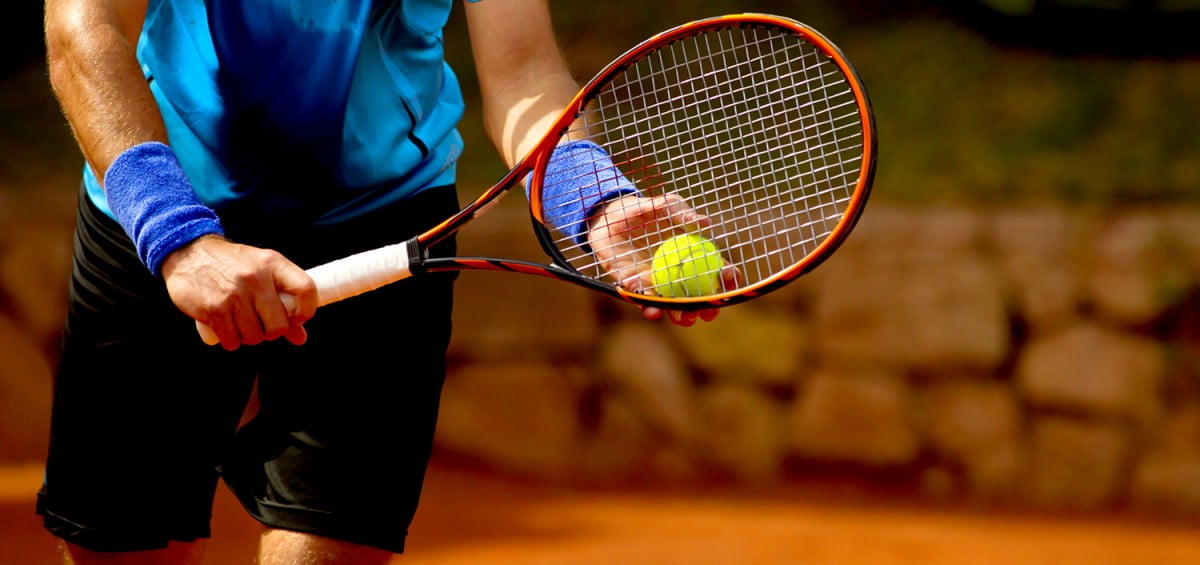
A Mid Week Guide To Tennis Injuries
“It wasn’t my inconsistent backhand slice that was at fault for being wiped of the court by a fit man 15 years my junior, it was my Tennis Elbow.”
How John from the local Tennis Club stacks up against Roger Federer
2016 was an amazing year, Trump rose to power, Brexit stunned the world and Leicester City won the English Premier League title at 5000 to 1 odds.
While many people in 2017 may have been hoping for the same fortune, it was always going to be highly unlikely that John aged 48, from the local tennis club would earn a wildcard entry into the Australian Open, overcome the world’s best tennis players and hold aloft the Australian Open trophy.
John like many amateur tennis players enjoys playing in a mid week competition, hitting socially with friends once, maybe twice a week and also spends unnecessary amounts of money on brand new tennis gear every year.
There was, however one glaring problem with John’s dream of becoming Australian Open Champion aged 48 (11 years older than the oldest champion, Ken Rosewall). His body seemingly continues to fail him; his elbow is sore, his knees are brittle and his back is as stiff as the high tech Graphite in his brand new $400 tennis racket.
2017 Australian Open Champion Roger Federer’s 18 Grand Slam titles and US$ 98 million earnings are a far cry from John’s 3 mid week tennis championships and 7 best clubman awards (3 in a row).
Federer has conquered the world, signed lucrative sponsorship deals and worked with a team of professionals to ensure he is at peak performance whenever he steps foot on court.
Federer has, for the past 15 or so years taken with him on tour, not only a full time coach, but a full time physio, doctor and hitting partner.
Tennis Injuries
Two-thirds of tennis injuries are due to overuse and the other one-third is due to a traumatic injury or acute event.
Overuse injuries most often affect the shoulders, wrists, and elbows.
With this is mind; lets take a further look at Tennis Elbow.
Tennis Elbow
Ah, the old Tennis Elbow, nearly everyone who’s played Tennis would have heard of Tennis Elbow, typically used as an age-old excuse for loosing 6-0. “Ah no, it wasn’t my inconsistent backhand slice that was at fault for being wiped of the court by a fit man 15 years my junior, it was my tennis elbow.”
Tennis Elbow occurs from an overuse of the muscles that extend the wrist or bend it backwards. It is also the muscle most used when the ball impacts the racket.
Symptoms
Pain or tenderness of the bony knob on your elbow and may cause the most pain when lifting something, making a fist or straightening your lower arm.
Prevention
Some of exercises that will help prevent and treat the injury include Seated Wrist Hammer Curls, Seated Wrist Straight Curls, Finger Curls.
For something more simple, (perhaps while settling into a ‘Cab Sav’ on the couch) squeezing a squash ball or making a fist can help strengthen the muscles.
Treatment
There is a range of natural or home remedies’, however seeking out a medical professional such as a Physiotherapist is advised to stretch out and strengthen the muscles, where dry needling or massage can be of assistance.
Other Tennis injuries to be aware of
Shoulder Injuries
Usually caused from overuse or poor conditioning and strength of the rotator cuff muscles, (for john and other amateurs alike, raising the shoulder and guzzling down a cold beer after play could be classified as ‘poor conditioning’).
A typical rotator cuff injury means the shoulder socket can become weak or fatigued and begin to irritate the surrounding tissues.
Symptoms
Pain and swelling, pain raising or lowering the arm and a click sound that occurs when raising the arm.
The motion of swinging a tennis racket will be greatly inhibited with a sore shoulder.
Prevention
Strengthening surrounding muscles such as the Deltoid is important however premature strengthening can delay healing and cause more pain.
As with any tennis related injury prevention, a thorough and concise warm-up before play to prevent any potential damage is recommended.
Treatment
There are a number of natural remedies, however it is best to consult a medical professional such as a Physiotherapist.
General Muscle Strains
Another classic injury with various rib-tickling outcomes. There is something truly spectacular about an older aged man ‘pulling a hammy’, albeit much to the disgust of the wounded.
Males and Females over the age of 40 are most likely to sustain a strained muscle.
Hamstring, calf and quadriceps are the muscles most commonly strained
Symptoms
Muscle tightness, bruising or weakness.
Prevention
A thorough warm-up is most important with this type of injury prevention, however further steps such as regular stretching or Pilates can greatly reduce the risk.
Treatment
Soon after it happens the recommended treatment is Ice (20 minutes every hour while awake), Compression (in the form of a bandage or tight clothing) and finally elevation to decrease the swelling.
likely treatment will include:
- Light massage
- Dry needling
- Acupuncture
- Muscle rehabilitation program
If you have any questions in regards to this condition do not hesitate to call our team to arrange an appointment.
For more information on how our team can help you, or to book an appointment contact us on (03) 9470 1010.



